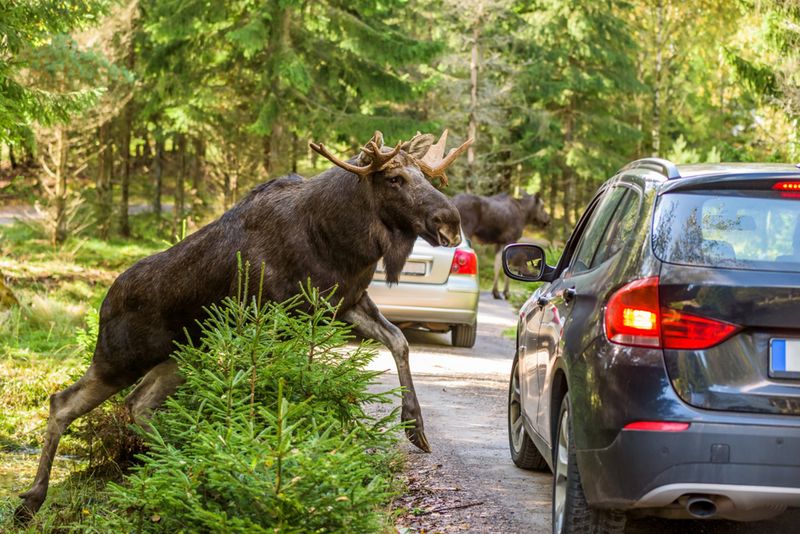Introduction

Humans have always studied their surroundings in various ways. Our hunter-gatherer ancestors studied their environment because it helped them to acquire food. When gathering plants, they had to know which ones were edible, and when hunting game animals, they had to understand how they behave. When humans began to form agricultural societies, they needed to understand the traits and requirements of plants and animals in order to grow them. In other words, biological knowledge has always been necessary for human survival.
Biology studies natural processes and the mechanisms of life. The word biology is derived from the Greek words bios (life) and logia (branch of study). The resulting word, biology, simply means "the study of life".
We need biological knowledge to answer the kinds of problems we encounter every day: What should we eat? How should we take care of our health? Why should we recycle our waste? Why should biodiversity be protected? How can we control climate change?
Biologists of the ancient world
Humans have always needed biological knowledge. Although biology emerged as its own scientific field only in the 19th century, the people of the Ancient world, such as the Greeks, took part in scientific studies that display resemblances to modern biology.
In all cultures, the roots of biology are in agriculture and medicine. The ancient Greeks were the first civilization that began to study biology in an experimental and systematic fashion.
The best-known natural scientist of classical antiquity is Aristotle (pictured). He conducted many comparative studies in order to learn about the habits and physiologies of different animals. Aristotle saw living beings as forming a hierarchy from the simplest to the most complex, i.e. from plants and fungi to humans. This idea was central to the development of biology during late antiquity and the medieval period.

Biological research develops
The scientific revolution
At the beginning of the Modern Age, the European scientific worldview was revolutionised. Behind this revolution was the discovery that Earth was not the centre of the known universe. Many biological discoveries and findings were also made during this time. The systematic and experimental study of natural phenomena began, and beliefs rooted in classical antiquity were questioned.
Redi and experimental research
Francesco Redi was central to the emergence of modern natural sciences in the 17th century. He is known as one of the founders of experimental biology. Redi disproved many beliefs and rumours of his time by making observations and conducting experiments.
For example, in Redi's time, the idea of spontaneous generation was thought to be behind the emergence of living species. Mice, for example, were thought to be born from blankets and grain, whereas flies were thought to emerge from the bodies of dead animals.
The most famous of Redi's experiments disproved the idea of spontaneous generation, showing that organisms can only emerge as the offspring of other living beings. In his experiment, Redi proved scientifically that maggots do not emerge from rotting flesh. He tested this by placing pieces of rotting meat in open and closed bottles. Flies did not emerge in the closed bottles in which samples of rotting flesh were placed, whereas they could be found in the bottles that were not closed with a lid. By conducting this experiment, Redi began to disprove the theory of spontaneous generation. Later, the French scientist Louis Pasteur also showed that spontaneous generation is not possible, even for microbes.
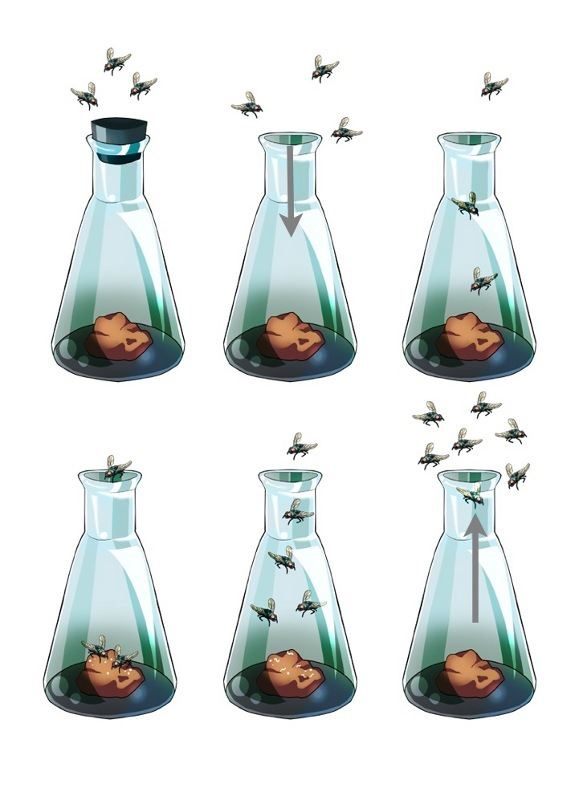
Fossils, microscopes and the classification of living organisms
Maria Sibylla Merian was one of the first people to study insects in a biological manner. She was one of the first European explorers of the New World. She studied the plants and animals of South America, and proved that some species of butterflies overwinter as pupae, whereas others overwinter as eggs, larvae and adults.
The first microscopes were developed during the 17th century. They were a significant breakthrough in terms of biological knowledge, because they made it possible for biologists to gather evidence about the "invisible world" of very small objects, such as cells.The Dutch merchant Antonie van Leeuwenhoek is widely considered the father of the microscope. He originally developed the microscope to study the quality of fabrics, but quickly became interested in studying other things with his new device. In due course, others began to use Leuuwenhoek's device to study living organisms.
The Swedish natural scientist Carl von Linné developed the scientific classification system of living organisms in the 18th century. Linné also helped to formalise the binomial naming system of living organisms and came up with the scientific names for many species. Linné's most controversial decision was that he classified humans in the same group as other animals, which up to that point had been practically unheard of. Although today Linné's taxonomic system of classification is considered antiquated, his binomial naming system is still used.
In the 18th century, people believed that living organisms had always looked the same since the dawn of time. However, as the century progressed, different fossil[term: fossil – The remains of an ancient organism stored in soil or rock.] findings began to challenge these beliefs. People like Mary Anning and Georges Cuvier were among the most famous fossil collectors and palaeontologists[term: palaeontology – A science that studies ancient life and its development with the help of fossils.] of the 17th century.
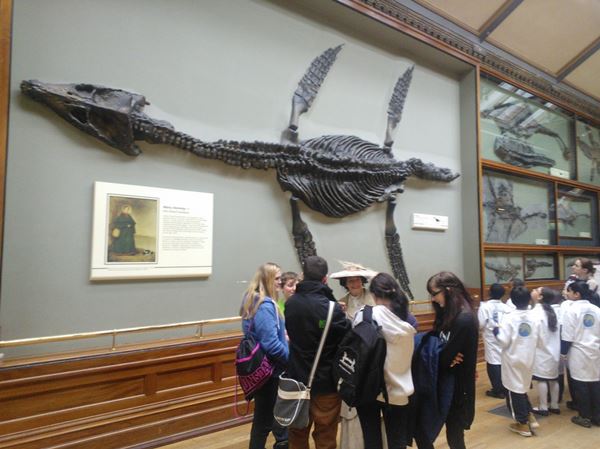
Biology in the 19th century
Evolutionary theory
Jean-Baptiste Lamarck was one of the first natural scientists to argue that modern organisms evolved from those that lived before. However, Lamarck thought that the offspring of living organisms inherited the traits acquired by their parents.
Later in the 19th century, Charles Darwin (pictured) developed his own evolutionary theory[term: evolution – The gradual changes in species and populations that result in differences between present-day organisms and their ancestors. Based on variation, heredity and natural selection.]. Darwin's theory was based on the concepts of natural selection[term: natural selection – The individuals that are the best adapted to their living environment get to reproduce, thus making their gene forms more common in a population.] and the inheritance of traits from one generation to another. These two concepts are still central to the study of biology today.
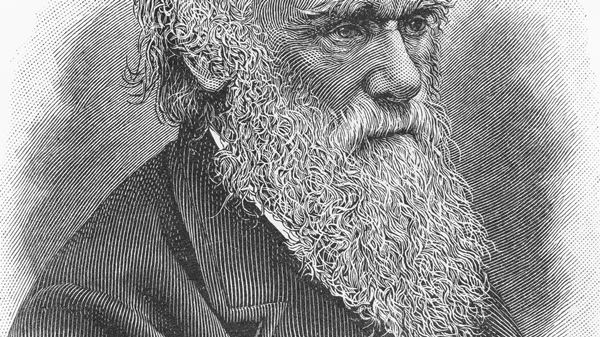
Cells, genetics and other discoveries
In addition to Darwin, other important biological developments also took place in the 19th century. According to cell theory, all living organisms consist of cells. Cell theory was introduced in the beginning of the 19th century, and by the end of the century it had already become generally accepted.
The French scientist Louis Pasteur continued Redi's work of disproving the idea of spontaneous generation. He did this by studying microbes. Pasteur proved that spontaneous generation could not take place in the current conditions of planet Earth by devising a new research set-up. This set-up consisted of two kinds of vessels: ones with curved, swan-like necks (A) and ones with open necks (B). Both vessels were filled with warm broth, which served as food for bacteria.
No microbial growth emerged in the swan-necked vessels (A), because bacteria could not travel to the broth from the air through the curved neck. In contrast, the open-necked vessels (B) were quickly filled with bacteria. This proved that bacteria were not spontaneously generated from non-living matter. At the same time, Pasteur proved that microbes could be found everywhere around us, even in the air.
The study of hereditary characteristics of organisms also began in the 19th century. The Austrian scientist Gregor Mendel began the study of genetics with crossbreeding experiments conducted with leguminous plants. Based on these experiments, Mendel deduced that many plant traits were hereditary. He could also infer the mechanisms according to which these traits were inherited. However, Mendel's experiments and findings were far ahead of their time. Many of his observations were only understood at the beginning of the 20th century.
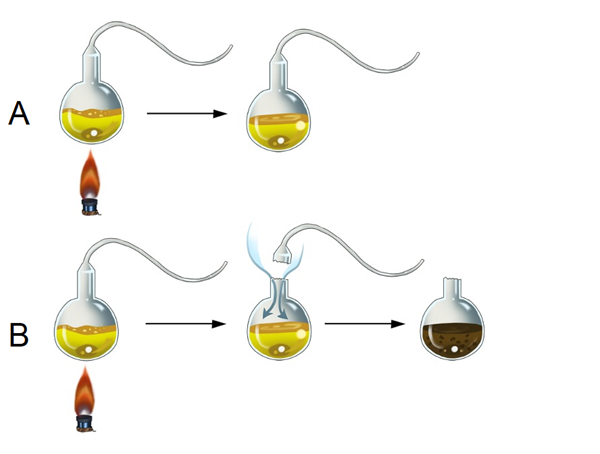
Biology in the 20th and 21st centuries
Biology in the 20th century
The study of biology progressed rapidly during the 20th century. In the beginning of the century, our knowledge of biochemistry, such as the actions of proteins and enzymes, was greatly increased. The knowledge of human physiology also grew more nuanced. A significant step for modern biology took place in the 1950s, when the structure and significance of DNA[term: DNA – The DNA molecule contains the genetic matter of an organism. It consists of nucleotides, which are in turn made of sugars, phosphates and bases.] were discovered by James Watson and Francis Crick with the help of Rosalind Franklin's research.

Ecology emerged as a scientific field of study only in the beginning of the 20th century, when ideas from the fields of economy and sociology began to be applied to the natural world. The branch of biology known as environmental science developed from ecology in the latter half of the century.
Evolutionary theory developed into its modern synthesis form in the middle of the 20th century, when ideas from genetics and other fields of biology, such as systematics[term: systematics – A science that studies the diversity and relationships of organisms.] and ecology, were applied to Darwin's core theory. By doing so, our understanding of the process of evolution has grown both more nuanced and more complex.
Biology in the 21st century
In the 21st century, more and more research has concentrated on bioscience. Bioscience or the life sciences comprise the branches of science that focus on studying life and the scientific phenomena that are connected to it. In addition to biology, the life sciences include fields such as biochemistry and biophysics. The development of bioscience has resulted in the development of new fields of research and the emergence of new areas of commercial activity. The field of synthetic biology, which studies and develops cells and organisms not found in nature, has especially had a large effect on the life sciences. Knowledge gained from research in synthetic biology can be used to produce new biofuels and medicinal chemicals, among other things. Synthetic biology combines biological knowledge with knowledge from the fields of computer science and engineering.
Biotechnology is another field of science that has grown more important during the 21st century. Biotechnology applies biological knowledge to the fields of industry and medicine.
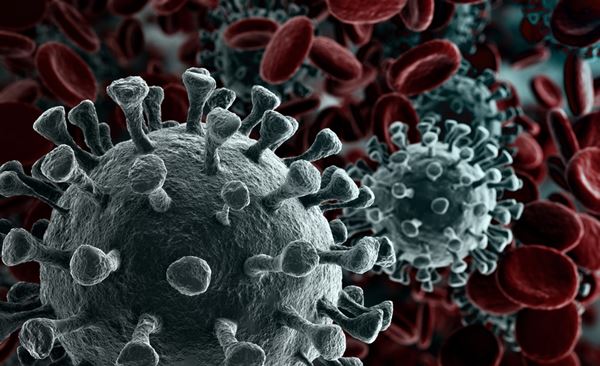
The organisational levels of biology
Biology studies life and living organisms on a variety of different levels. These organisational levels can be set in a hierarchy from the smallest to the largest, beginning from the molecule and ending at the biosphere[term: biosphere – The part of Earth that accommodates living organisms.]. Different branches of biology focus on studying life at different levels. For example, biochemistry studies the molecules found in living organisms, whereas ecology studies the relationships between organisms and their environment.
When studying biology, it is important to keep in mind that bigger wholes always consist of smaller parts. For example, a cell tissue consists of many individual cells. Large biological wholes cannot be understood by only studying the levels below them, because many biological phenomena are by nature very complex. For example, the behaviour of a population[term: population – A group that consists of individuals of the same species that inhabit a certain area.] cannot be understood by only studying individuals and their actions, but the study must also take the relationships between these individuals into account.
The organisational levels of biology
Organisational level | Example | Fields of biology |
Molecules | Proteins | Molecular biology and genetics |
Organelles | Mitochondrion | Cell biology and microbiology |
Cells | Nerve cell | Cell biology and microbiology |
Tissues | Nerve tissue | Physiology |
Organs | Brain | Physiology and anatomy |
Organ systems | Nervous system | Physiology and anatomy |
Individual organisms | Wood mouse | Physiology and ecology |
Populations | Wood mouse population | Ecology and evolutionary biology |
Organism communities | All the living organisms of the forest | Ecology and evolutionary biology |
Ecosystems | Forest (living and non-living nature) | Ecology and environmental science |
Biomes | Coniferous forest zone | Ecology and environmental science |
Biosphere | All regions of planet Earth that support life | Ecology and environmental science |
Branches of biology
Our knowledge of biology grows constantly. Biology is one of the most rapidly developing and growing fields of the natural sciences. Traditionally, biology has been divided into the study of botany and zoology. However, as new instruments have been developed and biological knowledge has increased, it has become necessary to divide biology in a different way. Biology can be divided into different fields based on the types of living organisms or phenomena studied. Some branches of biology are close to other natural sciences, as is the case with biochemistry and biophysics.
Branches of biology that are concerned with the classification of organisms include botany, zoology and mycology. The invention of the microscope made the study of microscopic unicellular organisms possible. This marked the beginning of microbiology. Microbiology can, in turn, be divided further into virology and bacteriology, based on whether the studied organisms are viruses or bacteria.
Biology can also be divided into branches based on the types of phenomena studied. Ecology, for example, studies levels of life that are larger than the individual, whereas evolutionary biology focuses on evolution and its mechanisms.
Ecology
The population, the biotic community, the ecosystem and the biosphere are all levels of life that are larger than the individual. These levels of life are studied by the branch of biology known as ecology. Ecology is concerned with the relationship and interactions between living organisms and their environment.
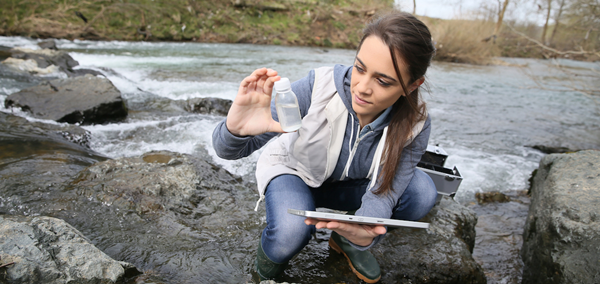
Genetics
Genetics studies genes and the laws of heredity. The discovery of the structure of DNA in the 1950s helped to propel genetics into a central position within modern biology. The findings of genetics are utilised in many fields, such as biotechnology and the pharmaceutical industry.
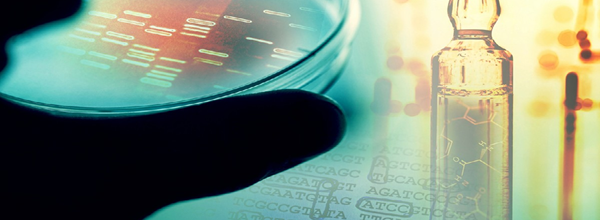
Evolutionary biology
Darwin's work helped the scientific community to realise that species are not static. The gradual development of species, known as evolution, is studied by the branch of biology known as evolutionary biology. Palaeontology is a science that aims to unravel the world of ancient organisms by studying fossils. Systematics studies the evolutionary connections and relationships between living organisms. The field of taxonomy[term: taxonomy – A field of biology that is focused on naming and classifying organisms.] classifies living organisms into different groups or taxons based on their evolutionary relationships.
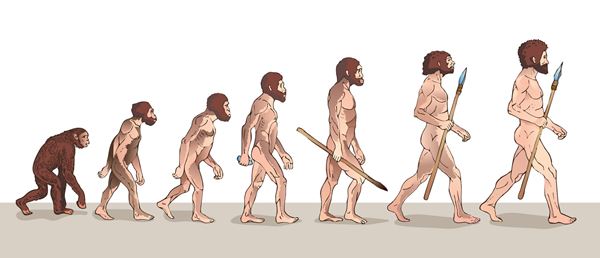
Cell biology and molecular biology
Cells divide, grow, interact with one another and die. Cell biology studies all these processes of the cell's life cycle. Cell biology also provides information on the functions of different cell structures (organelles) and the communication between cells.
Molecular biology studies the activities of biomolecules within living cells. Biomolecules are chemical compounds that function within living organisms. They include molecules such as proteins, lipids and carbohydrates. In practice, molecular biology and cell biology are closely related to genetics. Molecular biology includes disciplines such as microbiology, biochemistry and biotechnology.

Physiology and anatomy
Physiology studies the operational mechanisms of living organisms. Fields related to physiology include developmental biology, which studies the development of organisms, and histology, which studies the structures of tissues.
Morphology and anatomy study the structures and forms of living organisms. Neurobiology studies the structure and operation of the nervous systems of animals.
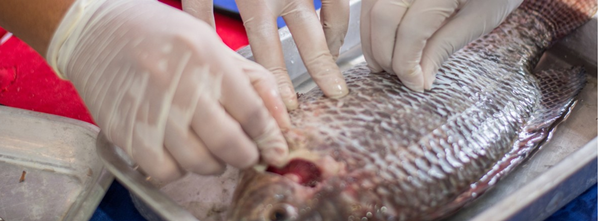
Branches of biology
Field of biology | What is studied? |
Molecular biology | Biomolecules and their functions. Includes biochemistry, biophysics, genetics and biotechnology. |
Biochemistry | The structure and functions of biomolecules |
Biophysics | The physical phenomena that take place on the molecular level |
Biotechnology | Making use of biomolecules in industry and medicine |
Genetics | Genes and heredity |
Microbiology | Microbes, such as bacteria, viruses and archaea |
Cell biology | The structures and functions of cells and their organelles |
Physiology | The structures and functions of tissues, organs and organ systems |
Developmental biology | The development of organisms |
Histology | The structures of tissues. |
Anatomy | The structures of organs and organ systems |
Ecology | Populations, relationships between species and ecosystems |
Environmental science | The state of the environment, environmental problems and other related phenomena |
Evolutionary biology | The gradual development of species |
Systematics | The diversity and evolutionary relationships of species |
Taxonomy | The description and classification of species |
Applications of biological knowledge
How is biological knowledge used?
The knowledge gained from biological research can be applied in various and sometimes surprising ways. For example, research on the individual development of carrion flies has given us information that can be used in criminal forensics. The individual development of insect species found in a dead person's body can be used to determine their time of death.
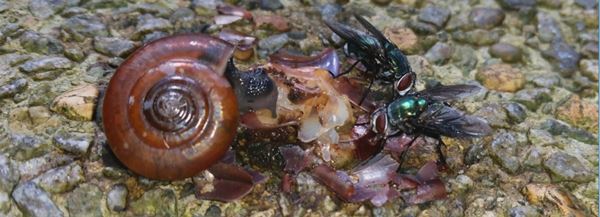
Biomimetics is a field of science that uses biological knowledge about the structures and functions of organisms to build commercial and technical applications that make use of similar structures and functions. For example, biomimetics has taken inspiration from the water-repellent surface patterns of lotus leaves and come up with similar patterns that can be used in water-repellent materials.
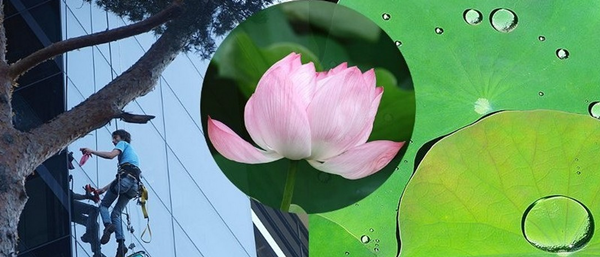
Biology and other sciences
Biology is linked to other natural sciences. Biology produces knowledge that is used by other sciences. For example, molecular and cell biology make use of chemical knowledge, whereas knowing the structure of the human brain is useful in psychology.
On the other hand, knowledge from other sciences is also essential in biological research. The fields of molecular biology, genetics and cell biology are all partly based on our knowledge of chemistry and physics. In addition, mathematical and statistical methods are to develop different areas of biology. Indeed, the terms life sciences or bio-environmental sciences are often used, as many biological disciplines and related disciplines overlap and interact with each other.
Biology today and in the future
Biologists work as researchers, specialists, administrators, teachers and educators. Many professions require at least some level of biological knowledge. Farmers, vets, wildlife guides and medical professionals all make use of biological knowledge in their everyday careers. Biological knowledge is also applied in various other fields, such as health services, food production and the pharmaceutical industry.

Biological research has progressed in leaps and bounds over the last few decades. It is estimated that the significance of various fields of biology, such as biotechnology, will continue to grow during the next couple of decades.
Environmental issues have also become increasingly important in the 21st century. Biological information can help us solve environmental problems in the future and find ways to achieve sustainable development. At the same time, biotechnology enables us to develop more environmentally friendly industrial processes and products. In addition, new environmentally friendly methods have been developed to clean up contaminated environments. For example, microbes and plants can be used to clean up contaminated soil, water or groundwater.
Overview: What is biology?
Biology is a natural science. It studies life from the molecular level to the level of the biosphere. Biology is the study of living things – bacteria, algae, plants, animals and viruses – and the phenomena connected to them, such as photosynthesis and cellular respiration.
Biology can be divided into different disciplines based on the phenomena or groups of organisms being studied. For example, based on the group of organisms studied, biology can be divided into plant and animal sciences and microbiology. Biological research has progressed rapidly in the 21st century. Biotechnology and environmental ecology in particular will become particularly important in the coming decades.
Based on the phenomena studied, biology can be divided into many different disciplines. These include:
|
Molecular biology |
Biomolecules and their function. Includes biochemistry, biophysics, genetics, biotechnology and more. |
|
Biochemistry |
The structure and function of biomolecules. |
|
Biophysics |
Physical phenomena at the molecular level and the study of molecular structure. |
|
Biotechnology |
Utilisation of biomolecules and cellular components in industry and medicine. |
|
Genetics |
Genes and the genome and their effects on the function of cells and individuals. |
|
Microbiology |
Studies microbes such as bacteria (bacteriology), archaea, protozoa and viruses (virology). |
|
Cell biology |
Structure and function of cells and their organelles. |
|
Physiology |
Functions of tissues, organs and organ systems. |
|
Developmental biology |
The development of organisms |
|
Histology |
The structure of tissues. |
|
Anatomy |
The structure of organs and organ systems. |
|
Ecology |
Populations, species interactions and ecosystems. |
|
Environmental science |
The state of the environment, environmental problems and factors that affect the environment. |
|
Evolutionary biology |
The evolution and change of species over time. |
|
Systematics |
Investigating the diversity and evolutionary relationships of species. |
|
Taxonomy |
Description and classification of species |
Basic biological research is conducted out of a desire for knowledge. For example, we may want to find out what areas mosquitoes thrive in and how many of them carry certain viruses. Applied research uses the knowledge gained in basic research to solve specific problems. For example, we can find out what kind of environments mosquitoes do not thrive in.
Biological knowledge can also be applied in many other fields. For example, when a Swiss engineer was cleaning prickly inflorescences that had stuck to his dog from a plant, he noticed how the hooks of the inflorescence clung to the dog's fur. This observation led to the invention of the velcro strip.
Summary
- Biology studies living nature and its phenomena.
- Biology studies life from the molecular level to the level of the biosphere. Biology is the study of living things – bacteria, algae, plants, animals and viruses – and the phenomena connected to them, such as photosynthesis and cellular respiration.
- Biology can be divided into different disciplines based on the phenomena or groups of organisms being studied. For example, based on the group of organisms studied, biology can be divided into plant and animal sciences and microbiology. Biological research has progressed rapidly in the 21st century. Biotechnology and environmental ecology in particular will become particularly important in the coming decades.
- The biological worldview has developed significantly during the last few centuries.
- In the 1700s, Carl von Linné developed the classification system of organisms.
- In the 1800s, Charles Darwin introduced his evolutionary theory and the understanding of physiology and inheritance was increased.
- In the 1900s, many significant developments were made, especially in the fields of molecular biology and ecology.
- Biology can be divided into branches and fields based on the classifications of organisms or the phenomena studied.
- Biology can be divided according to the classification of organisms into fields such as botany, zoology, mycology and microbiology.
- Biology can be divided according to the phenomena studied into fields such as ecology, genetics, evolutionary biology, cell biology, molecular biology and physiology.
- Basic biological research is done out of a desire for knowledge.
- The information gained from basic research is used in applied research to solve specific problems.
- Biology also relies on information produced by the other natural sciences.

